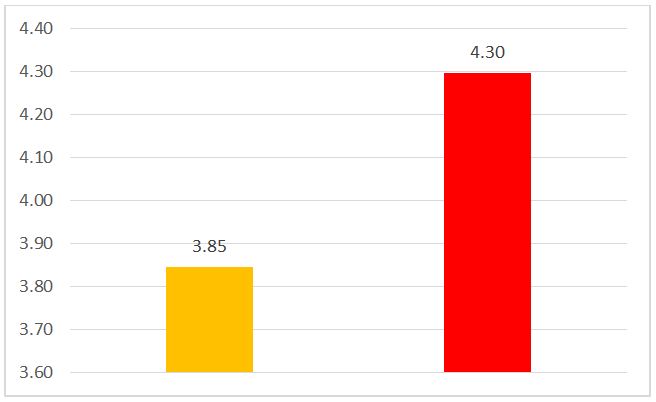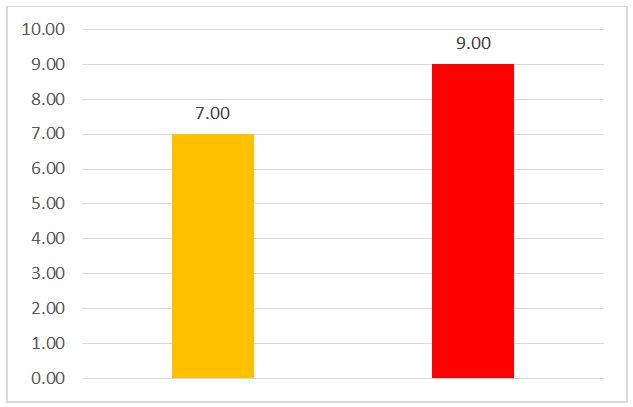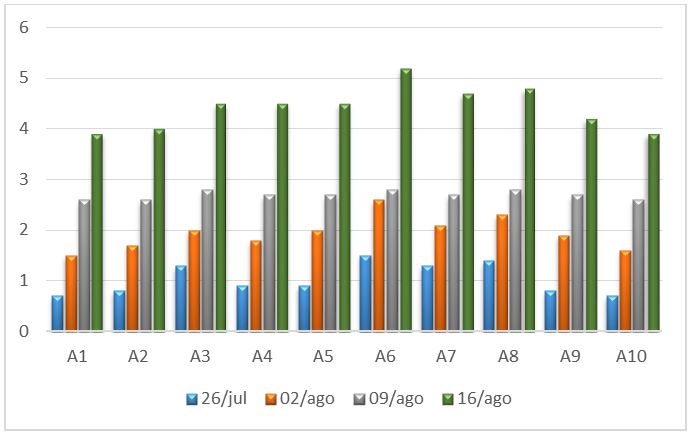Effects of Magnetized Water on Production of Alface Muda
In recent years there have been increasing scientific research on agricultural technology and innovation on the influence of the magnetic field. This study was based on the search for new techniques capable of providing greater production without excessive use of water. The objective of this study was to evaluate the effect of magnetized water on lettuce (Lactuca Sativa). The experiment was carried out in the greenhouse of the Faculty of Technology - FATEC of President Prudente-SP and constituted in the planting of the lettuces in two trays with 120 cells each, irrigating a tray with conventional water and another one with magnetized water, so that they were studied and compared the development factor of the aerial part and roots of lettuces. The results showed that there was a significant difference in the analyzed parts, which allowed concluding that the magnetism presents effects that accelerate the germination of the seeds in a shorter period, which increases the efficiency in the production.
Keywords: Magnetism; Lettuce; Germination
The formation of quality seedlings in the production of any crop is very important. Thus, it is fundamental to study the factors that influence the growth of lettuce seedlings and the use of electromagnetized can promote the production and reduction of water consumption [1].
Sales shows that electromagnetism consists of a technology that uses the energy generated by magnetism, and when projected into water it modifies the physico-chemical structure of water, thus making it the most efficient way to be used. Magnetic field is a region of space where magnetism manifests itself through the so-called magnetic actions[2]. These actions are verified at a distance and only a few substances are influenced by the magnetic field, such as ferrous materials. These substances are called ferromagnetic.
When an electric current passes through a conducting wire, it creates around itself a magnetic field. This effect was first verified by Hans Christian Orsted in April 1820 [2].
According to Freitas apud Putti, when water is subjected to the influence of magnetic fields, crystallization and precipitation occur in solutions, influencing the alteration of its morphology [1,3]. Thus, this research aims to evaluate the development of lettuce moult using magnetized water in comparison to conventional water, specifically to evaluate the growth of aerial part and root of this crop of Asian origin where climate is temperate, lettuce (Lactuca sativa L.) is good source of vitamins and energy. It is the most traded hardwood vegetable in Brazil, producing about 350 thousand tons, with 8 thousand hectares of production in the state of São Paulo alone [4].
The climate influences the production, it is a vegetable that adapts to the mild climate and it is in the winter that one reaches the greater productions. In other seasons, the warmer climate should be taken into account, resulting in low quality and high prices, but some species have been improved for cultivation in tropical regions [5].
Nowadays, with the help of technology there is the possibility of producing vegetables in greenhouses, and thus gain greater control with respect to climate, weather, diseases and among other factors. The project brings the results found after the comparison between the production of lettuce seedlings with conventional water and magnetized water and the entire production process. Thus, the research sought to technically evaluate the development of lettuce moult with the use of magnetized water in comparison to conventional water, specifically the growth of the aerial part and root of that crop.
The experiment was conducted in a greenhouse of the FATEC Faculty of Technology of Presidente Prudente, beginning July 23, 2017 until August 16, 2017 (Figure 1).
It consisted in the planting of two trays with 120 cells each, with pelleted seeds of lettuce of variety “Vanda”. Vegetable substrate was used. A randomized complete block design of ten replicates of 12 cells was used, totalizing 20 plots and 240 cells (Figure 2)[6].
From the sowing to the 24 days, irrigation was performed with 4.0 ml of water in two daily applications for each cell, with one tray receiving only magnetized water and the other conventional water (4.0 l m -2, divided into two 2 mm daily applications). Weekly measurements were taken of the height of 10 selected plants and at the end the root length was measured.
To magnetize the water, a 50 g Sylocimol 14 magnet, placed inside a plastic container with a capacity of 2.0 liters of water, was used for about 20 minutes (time required for magnetization). After use the water was replenished.
The Sylocimol, magnetizes the water through magnets intercepting and organizing the electrons that are the free radicals of water (O- and H+), occurring ionic exchange and ionic pairing during the regrouping of the water molecule forming the most fluid H2O molecule possible in hexagonal format (Figure 3) [7].
The time required to magnetize the water is 20 minutes to 20 liters of water, remaining magnetized for up to 48 hours in an open container, but it may have an indeterminate period if kept in an enclosed container. Figure 3 shows the sylocimol used in the experimente.
At the end of the experiment the seedlings were removed from the trays, washed for cleaning the substrate of their roots and measurements of shoot length and root length were taken.
Lettuces were planted on July 23, 2017, starting measurements with three days of fertilization. These were collated on August 16, 2017 totaling the moulting cycle.
Regarding the average length of the aerial part, the lettuces irrigated with conventional water had 3.85 cm, and the lettuces that were irrigated with magnetized water had 4.30 cm, presenting a growth difference of 11.68% as can be visualized in Graphic 1.
Regarding the mean root length, the plants irrigated with conventional water were 7.0 cm, and with water magnetized 9.0 cm, with a difference of 28.57% as can be visualized in Figure 2.
Measurements performed weekly, randomly, on the 10 lettuces selected with conventional water and magnetized water yielded results as the average growth of the week and the average of each plant during the 24-day cycle, as shown in Table 1 below.
The data in Table 2 show the average weekly lettuce growth with magnetized water, between the intervals from July 26 to August 16, 2018.
The lettuce seedlings irrigated with magnetically treated water presented better results in both shoot length and root length. According to Katsuki, et al. Hasson, et al. apud PUTTI, the use of magnetized water brings benefits to the plant as it increases the solubility of some minerals. permeability in the soil, which consequently increases the efficiency of irrigation. In the experiment we obtained 12% more of the length of the aerial part and 29% of the root length in the treatments where magnetized water was used [1,8-10].
According to the proposed objective, it was verified that shoot height and root length in lettuce seedlings when irrigated with magnetically treated water presented better results when compared to irrigation with natural water. In this way it is possible to reduce days of the lettuce seedlings’ production cycle, when the magnetic treatment of the water is used, which will consequently increase the productive efficiency.









